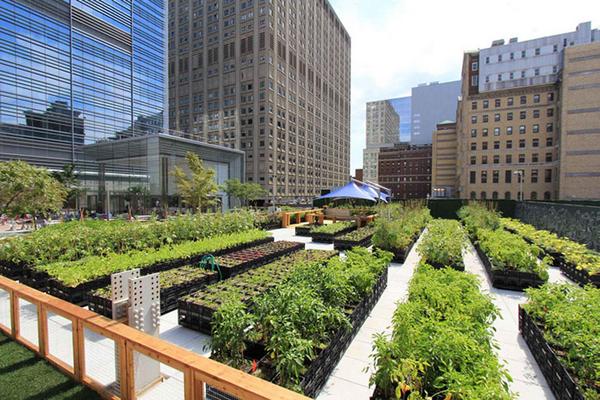The Single Strategy To Use For City Blooming
The Single Strategy To Use For City Blooming
Blog Article
City Blooming Fundamentals Explained
Table of ContentsAn Unbiased View of City BloomingTop Guidelines Of City Blooming8 Simple Techniques For City BloomingOur City Blooming StatementsCity Blooming - An Overview
Interested in expanding food for sale in the City of Chicago? Considering starting a neighborhood yard? Adjustments to the Chicago Zoning Statute allow agricultural usages like neighborhood yards and urban farms in many parts of the city. Below is a list of regularly asked questions regarding the regulations and laws that cultivators must consider when intending a metropolitan farming project.
The zoning amendment does not change any type of various other codes managing composting, building permits, buying or renting City possessed home, service licenses or environmental contamination. There are existing codes that control these concerns and they stay completely result and may apply to your project. Community yards are usually had or handled by public entities, public organizations or community-based organizations and preserved by volunteers.
Urban farms grow food that is intended to be sold, either on a nonprofit or for-profit basis. As a result of their industrial objective, city farms need a service license. Yes. A community yard is allowed to market surplus create that was expanded on site if the sales are accessory or subservient to the garden's main purpose described over.
8 Simple Techniques For City Blooming
Composting is allowed yet just for plant product that is produced and used on site. The quantity of compost material can not exceed 25 cubic lawns at any kind of offered time according to the standards in 7-28-715 of the City's Municipal Code. Yes. Due to the fact that the dirt at the majority of brand-new yard sites requires modifying, compost, dirt, wood chips, or various other products can be gotten to create or boost the growing area - sustainability.

If a structure permit is needed then the hoophouse will be taken into consideration an accessory structure. You can figure out more regarding the structure authorization demands by calling the Department of Structures. The 25,000-square-foot size limitation is intended to avoid a solitary community yard from controling a given block or detracting from the block's existing domestic or industrial personality.
The limit does not use to yards located in Public Open Area (POS) areas. Can there be more than one community yard that is 25,000 square feet on a single block? Fence is not required, nevertheless, gardens that have large car parking locations may be needed to install fencing or other landscape design features.
The 45-Second Trick For City Blooming
B1 & B2 districts require that all commercial usage activities be carried out inside. R areas limit industrial activity. The laws mirror the function and intent of the Zoning Code. Is fencing needed for metropolitan ranches? Yes. Fences might be called for, together with landscape design and screening, for sure parking lot and outside work or storage locations depending upon location and the particular activity taking place.
Urban farms require building authorizations and zoning authorizations prior to building and construction (container and raised bed gardening etc.). Various other kinds of city review might be required depending on particular structures, activities, dimension, landscaping, licensing, public health and stormwater management concerns.
The Department of Business Matters and Consumer Security can help establish the details type of organization permit that's needed. Off road car park is required for many industrial tasks in Chicago. The called for number of auto parking rooms is based on the number of employees functioning on site and not the square video footage of the growing room.
Getting My City Blooming To Work

A metropolitan farm can offer compost material generated on site, nonetheless, the procedure should comply with the regulations in 7-28-715 of the Chicago Municipal Code. Aquaponic systems are enabled inside your home on metropolitan farms in lots of zoning areas.
Approximately five hives or swarms of honey bees might be maintained as an accessory use. Nevertheless, beekeepers must register with the Illinois Department of Agriculture. For more details regarding the recommended zoning change you might speak to the Department of Housing and Economic Development, Bureau of Preparation and Zoning at 312.744.8563.
Farming in cities and city locations A metropolitan ranch in Chicago. Urban farming describes different techniques of growing. https://cityblooming.blog.ss-blog.jp/2024-06-27?1719472203, handling, and distributing food in urban areas. The term additionally puts on the location activities of animal husbandry, tank farming, beekeeping, and gardening in a metropolitan context. Urban farming is identified from peri-urban farming, which happens in backwoods beside suburban areas.
How City Blooming can Save You Time, Stress, and Money.
It can entail a motion of organic farmers, "foodies" and "locavores", that look for to form social networks based on a common values of nature and neighborhood holism. These networks can Learn More create by way of official institutional assistance, becoming integrated right into local town as a "transition community" activity for lasting city growth.
In either situation, the much more straight access to fresh veggie, fruit, and meat products that might be know with city farming can improve food protection and food safety and security while decreasing food miles, leading to lower greenhouse gas exhausts, therefore adding to climate change reduction. Some of the initial proof of urban farming comes from Mesopotamia.
Report this page